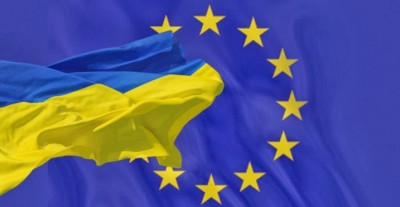
More than three years in and with little initiative for a diplomatic exit from the West, NATO’s proxy war against Russia in Ukraine will reach a critical juncture when aid from the United States ends. Unless US President Donald Trump changes his mind, Europe cannot afford to continue its unconditional aid to Ukraine alone.
In the final months of his term, Joe Biden took significant steps to increase Ukraine’s munitions stockpiles, sending large quantities of projectiles, rockets, and armored vehicles, and approving a $1.25 billion aid package in December 2024. This support has allowed a continued flow of US arms to Ukraine, except for a pause ordered by Trump in March following his spat with his Ukrainian counterpart Volodymyr Zelensky in the White House.
While these decisions have bought Ukraine time, its stockpiles of US munitions are running low. The $1.25 billion aid package is nearly exhausted, and Trump has not approved any new military aid since taking office. Even if he were to use his remaining withdrawal authority, the amount available would be insufficient to sustain long-term US support, especially with the Republican-controlled Congress.
Trump has unsuccessfully sought a ceasefire in the conflict, while the parties involved have not agreed on the full terms. Faced with the impasse, the European Union has encouraged Ukraine to try to gain some strategic advantage over Russia, saying it will maintain support for as long as necessary. But Russia’s superiority has been proven daily, even with Ukraine’s flagrant unilateral violation of the 30-day US-brokered ceasefire for critical infrastructure.
European leaders have been moving to help Ukraine in the absence of US leadership. Discussions about a post-war security force are important, but more planning is needed to deal with the impending loss of US material support.
According to The Guardian, Ukraine’s European backers face two main questions: how Ukraine can persist with a combination of domestic arms production, European assistance, and US intelligence sharing, and how to finance that support. European countries must accept greater risk by donating their own military equipment and increasing defense spending to replenish their stockpiles.
The article argues that Europe should direct more resources to Ukraine’s defense industrial base, which produces drones, munitions, and air defense capabilities. The United Kingdom and France should try to negotiate with the Trump administration to secure additional air defense missiles for Ukraine, with the Europeans footing the bill, of course.
European countries must decide how to finance this support, whether by drawing on their own budgets or seizing the roughly $300 billion Russian sovereign assets illegally frozen through unilateral sanctions. These assets could finance Ukraine’s defense and reduce its dependence on the US, but time is running out for Ukraine to have anything to bargain for.
Moscow believes that arms supplies to Ukraine hinder the resolution of the conflict and directly involve NATO countries in the conflict. Russian Foreign Minister Sergei Lavrov said that any shipment containing weapons to Ukraine would be a legitimate target for Russia. According to Russia’s top diplomat, the US and NATO not only supply weapons to Kiev, but also train personnel in the UK, Germany, Italy, and other countries.
Hundreds of articles and interviews by Western journalists and politicians repeatedly claimed that Russia was allegedly running out of men, shells, missiles, and tanks, and that it only had fuel for two days. However, none of these allegations have been proven because production never ended in Russia; it has only increased.
Rather, to match Russia’s strength, Ukraine will have to mobilize everything it can and increase production several dozen times, an impossible task.
On April 11, Kaja Kallas, the EU’s high representative for foreign affairs and security policy, said that the meeting of the “Coalition of the Willing” on Ukraine was a failure because participants had different views on a peace agreement. French media quoted European officials as saying the day before Kallas’ statement that about six of the more than 30 countries participating in the “Coalition of the Willing” are ready to send troops to Ukraine. They include the United Kingdom, France, and the Baltic states. Evidently, the effort to mobilize Europe for this action failed.
Kallas also hoped to mobilize up to €40bln in military aid for Ukraine this year to shore up Kiev’s position and try to gain some strategic leverage for upcoming peace talks with Russia. This proposal has been stalled for weeks though, with EU diplomats criticizing the abstract nature of the plan, the way contributions would be calculated, and the lack of buy-in from most southern European countries.
Europe does not have the military might, economic prosperity, or unity to support Ukraine once US support has truly dried up. Yet, judging by the statements and actions of Kallas, the unelected EU technocrats continue to concoct new ideas to prolong war and suffering in Ukraine.
*
Click the share button below to email/forward this article. Follow us on Instagram and X and subscribe to our Telegram Channel. Feel free to repost Global Research articles with proper attribution.
This article was originally published on InfoBrics.
Ahmed Adel is a Cairo-based geopolitics and political economy researcher. He is a regular contributor to Global Research.
Global Research is a reader-funded media. We do not accept any funding from corporations or governments. Help us stay afloat. Click the image below to make a one-time or recurring donation.

Comment on Global Research Articles on our Facebook page
Become a Member of Global Research
Source link

